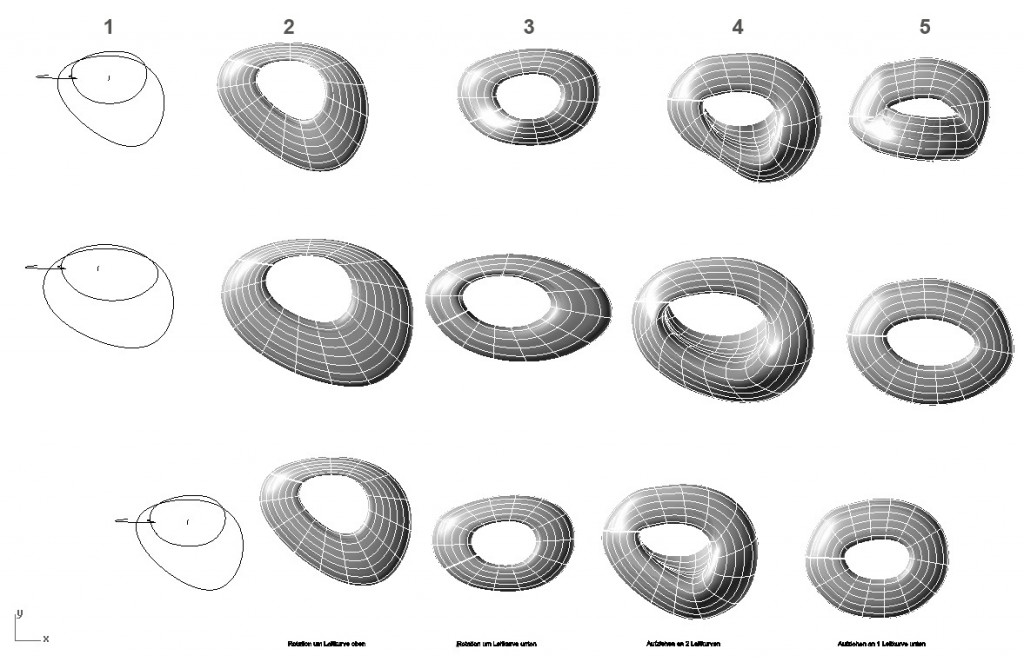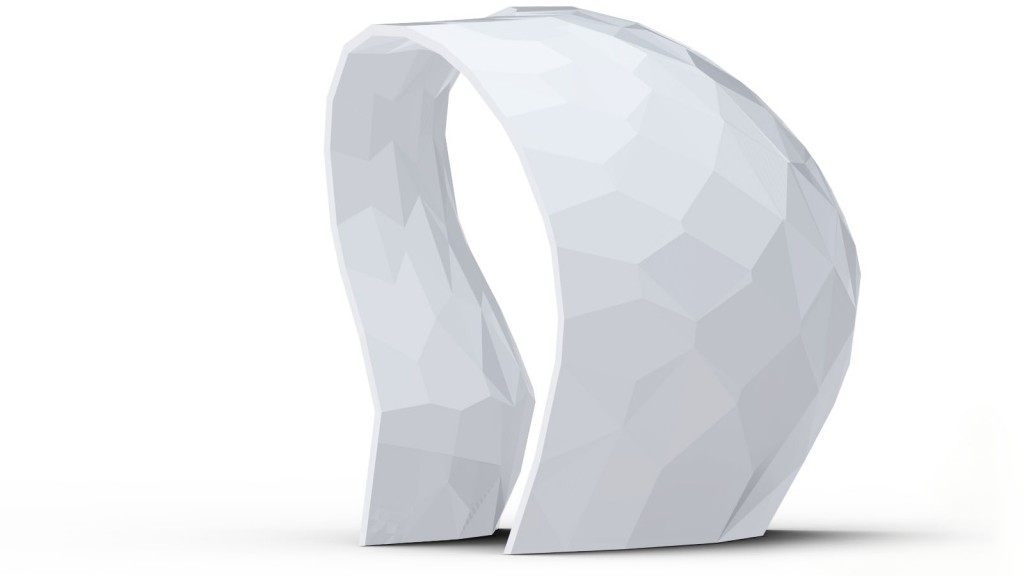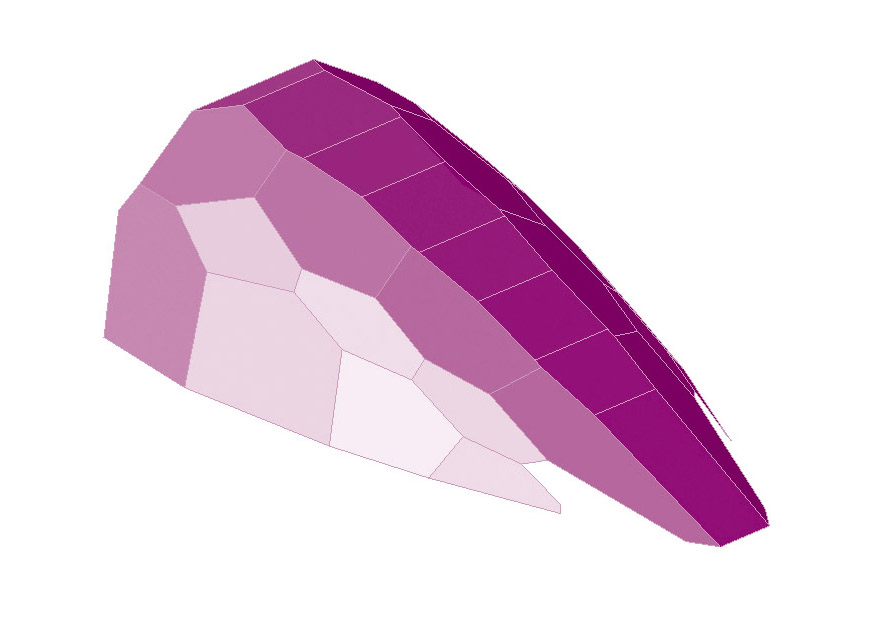Formfinding process
To find a formal solution which fits spatial and architectural needs on one hand and which provides a geometrically compatiblen curvature for superimposing and flatening the desired ornament we tried different ways of surface generation. We found out that sweeping surfaces are easy to handle with our panelization algorithm .
Modes of form generation (colums form left to right – top view):
- shape and rail curves
- sweeping surface using upper sweep rail
- sweeping surface using lower sweep rail
- sweeping surface with two rail curves
- sweeping surface with one rail curve

Scale and section
From various possible shapes we investigate the load bearing behaviour of the structure by taking out a section of the whole (green parts). We do this because we will not be able to build a whole building for our prototype. On this portion we superimpose the chosen ornament, generate planar panels (see ornamentation-1) and eventually we will build a mock-up to proof the structural integrity of our prototype in real scale.

Building envelope
The useable volume of the structure is approx. 6 (width) x 10 (height) meter x the perimeter of the section (length) what leads to approximately 80 panels. This results in up to 3 floors depending on the type of use.

More prototype studies
We are currently working on several design studies for the prototype, some of them shown below. We investigate how the curvature of the surface influences the discretization and the load bearing capacity of the system and how does this affect the connector system? The curvature of the surface leads to very specific distorted patterns dependent on the desired ornament and discretization method.
![-srf03-240-10-A1 [Konvertiert]](wp-content/uploads/2010/09/WEBSITE-Clr1.jpg)


